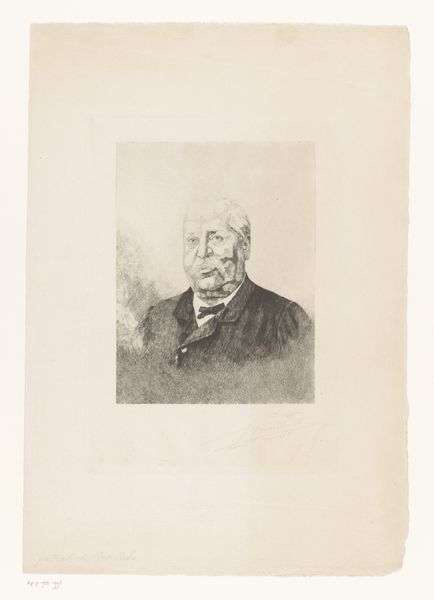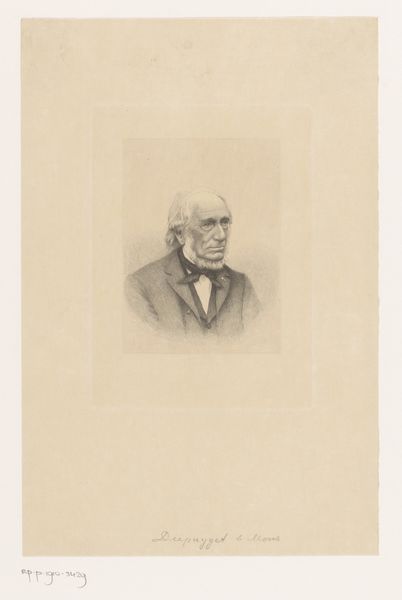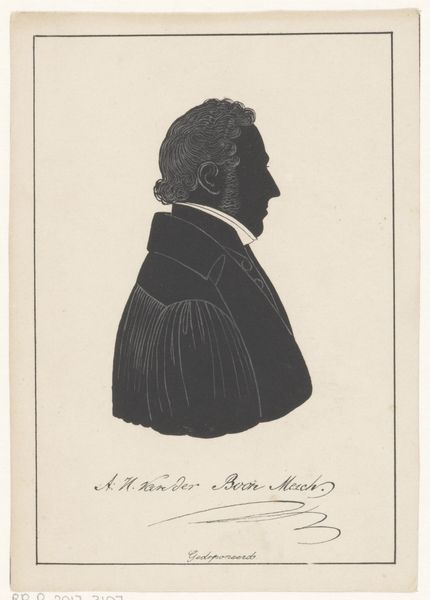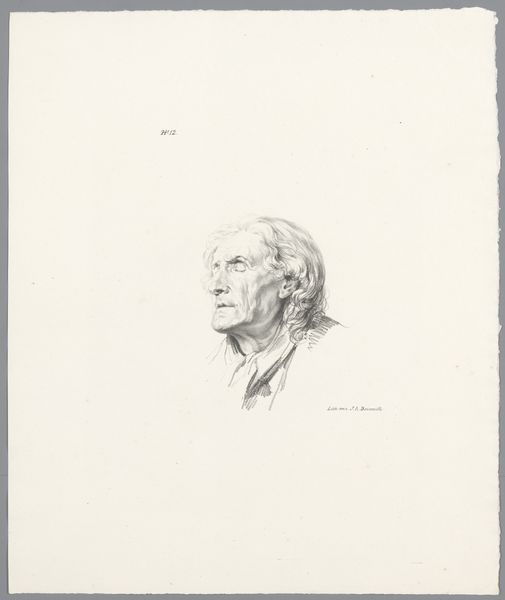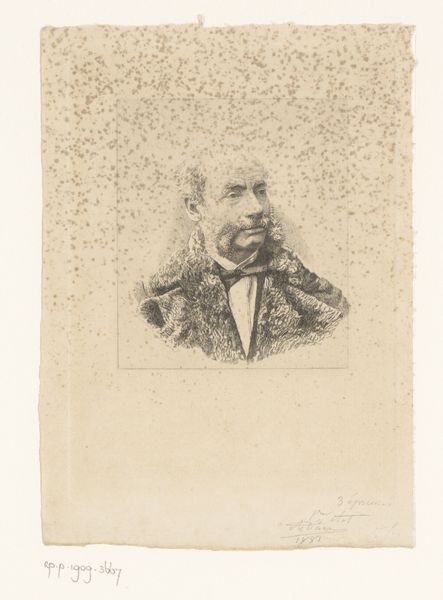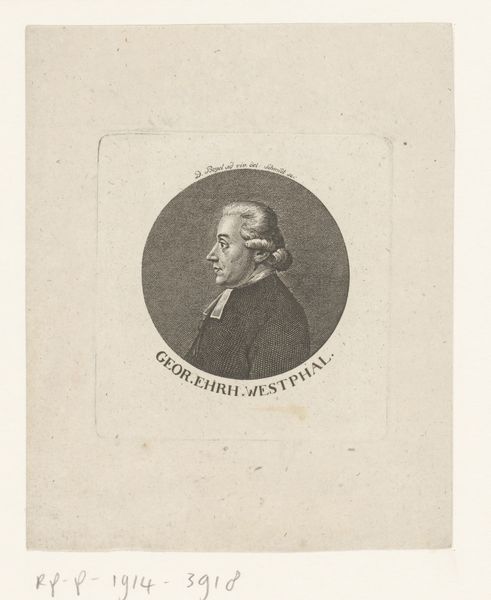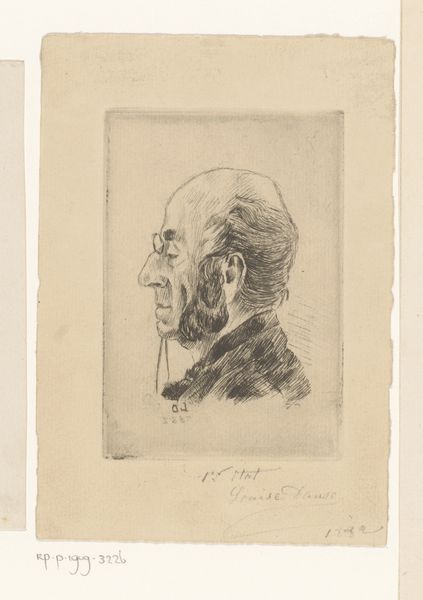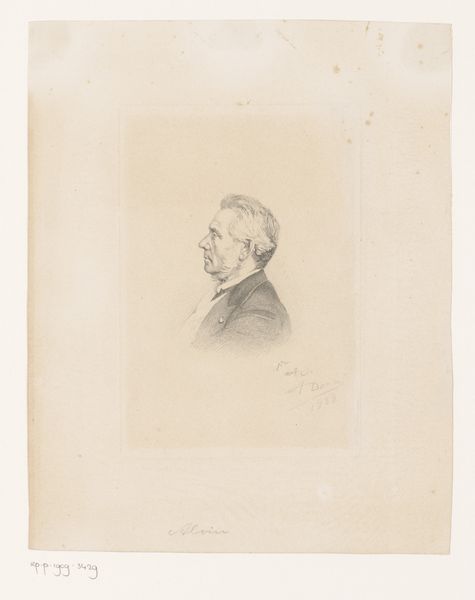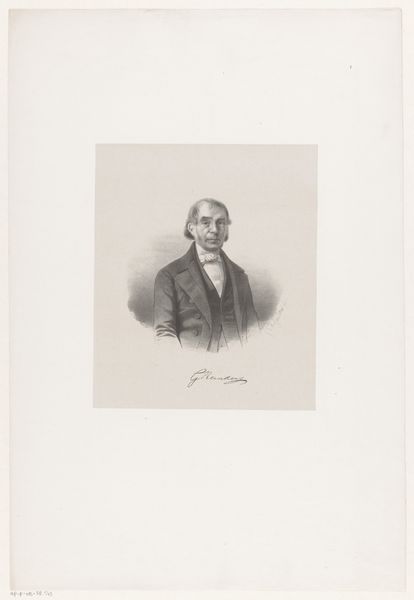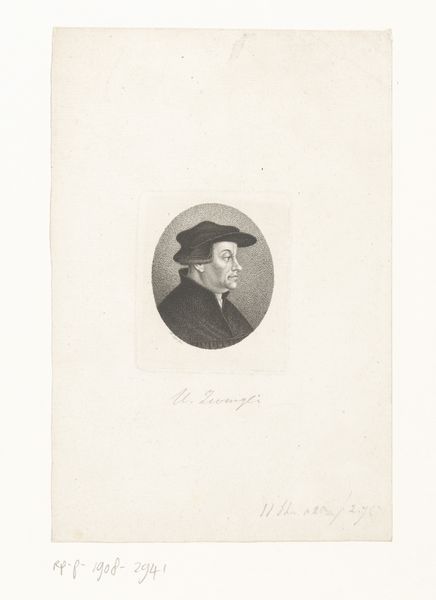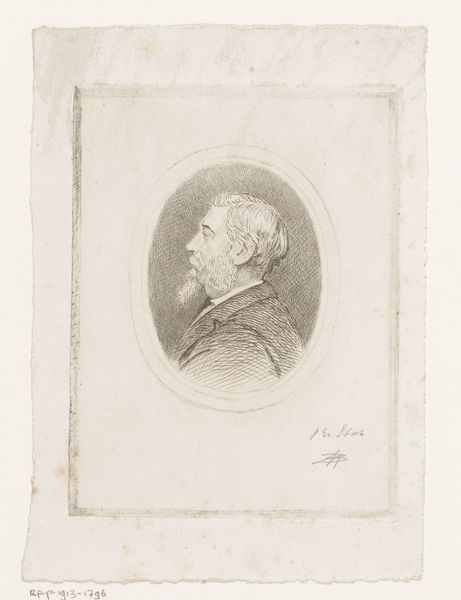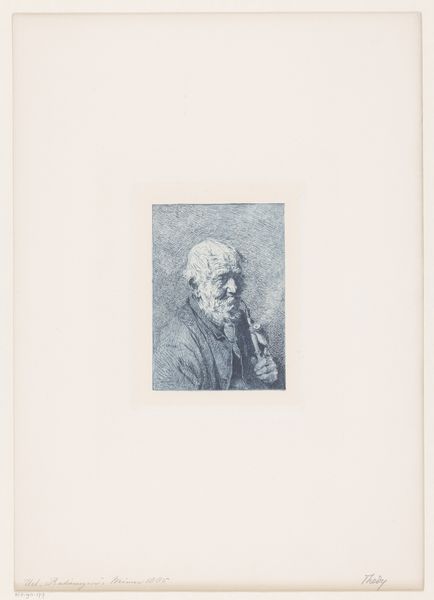
Dimensions: height 535 mm, width 386 mm
Copyright: Rijks Museum: Open Domain
Editor: Here we have Jozef Hoevenaar’s "Portret van Th. Philippi" from 1880, currently housed in the Rijksmuseum. It's an intaglio print, quite small, but the detail is striking. The subject seems very… distinguished, almost stern. What do you see in this portrait from a historical perspective? Curator: Well, immediately, I’m thinking about the function of portraiture in the late 19th century. Photography was becoming more accessible, so drawings and prints had to offer something beyond a simple likeness. Consider who this Philippi was. Patron? Political figure? Understanding his position in society gives us insight into why Hoevenaar, or perhaps a commissioning body, chose to depict him this way. Editor: That’s interesting. I hadn't considered the societal pressures on portraiture at that time. It looks like the subject had influence. Is there any way that portraiture affected or bolstered someone's social or professional power? Curator: Absolutely! Portraits weren't just documentation; they were carefully constructed images, reinforcing power and status. The controlled gaze, the formal attire, even the artistic style all contributed. Hoevenaar’s romantic lines lend Philippi an air of respected intellectualism, but it could also play a role in myth-making or historical interpretation. Was Philippi’s social image in need of repair, perhaps? How would that affect Hoevenaar's interpretation? Editor: So, beyond the artistic merit, this print acts as a historical document, reflecting the subject's standing and the socio-political climate of the time. It really challenges the idea of portraiture as a simple capturing of reality. Curator: Precisely. And analyzing it helps us understand the power dynamics at play and the role art played in shaping perceptions of individuals and institutions. Considering how and why images circulate remains incredibly relevant today.
Comments
No comments
Be the first to comment and join the conversation on the ultimate creative platform.
